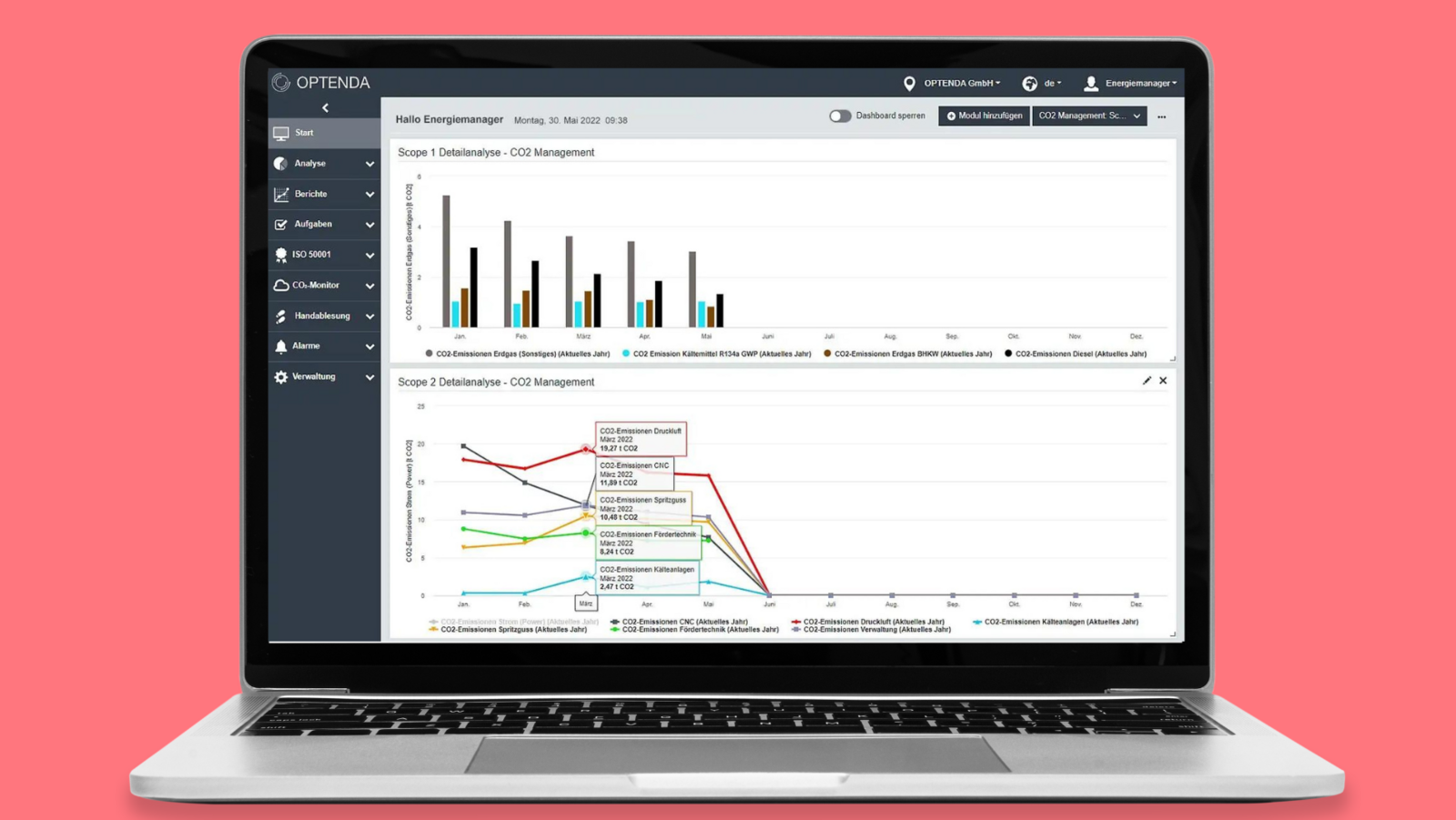Energy efficiency: win-win situation for the environment and companies
Reducing greenhouse gas emissions is a top priority if climate change is to be curbed. As a major source of emissions, companies in industry and commerce play a particularly important role. In order to effectively reduce CO2 emissions, cooperation and exchange within a company is key. It is particularly important to link the area of CO2 management directly with energy management. After all, the largest share of greenhouse gas emissions is attributable to energy consumption. If this is reduced, this also means lower greenhouse gas emissions - and lower costs for the company. Increasing energy efficiency is therefore a win-win situation for both the company and the environment.
But how can energy efficiency be improved in a targeted manner so that results are quickly visible in the CO2 balance sheet? Transparency in energy consumption and the resulting emissions is essential for this. Energy management makes a decisive contribution to collecting the relevant data. In order to then obtain concrete starting points for reducing emissions, it is necessary to categorize and evaluate the collected consumption data accordingly.
Iqony subsidiary OPTENDA has developed an integrated system solution for this process, consisting of the energy management software Energy Monitor and the CO2 balancing software CO2 Monitor: Where Energy Monitor makes energy flows and consumption transparent in order to derive optimized energy use, CO2 Monitor ensures transparency in CO2 and greenhouse gas emissions and thus provides the data basis for decarbonizing products, sites and properties or a company as a whole. Both applications can be operated from the same interface and by all responsible parties - all data is thus combined in one system.
With its expertise in energy and CO2 management, OPTENDA supports, for example, the greenhouse gas balancing of the Digital Campus Zollverein. The recording and evaluation of all emissions generated represents the first step on the path toward climate neutrality. This creates the transparency needed to derive targeted measures for reducing CO2 emissions.


